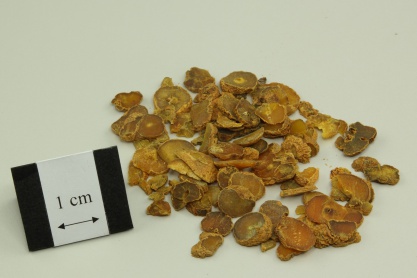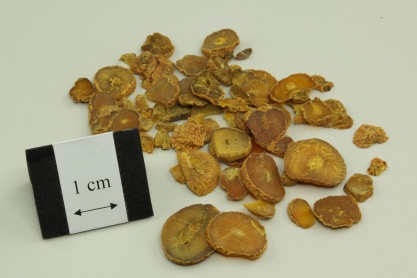延胡索
- ENG
- Yangusuo
- LATIN
- Corydalis Rhizoma
| Medicinal Group | Blood-activating analgesic medicinal |
|---|---|
| Source | Dried tuber of Cordalis yanhusuo W.T. Wang (Fam. Papaveraceae) |
| Nature and Flavors | pungent, bitter; warm |
| Meridian Affinity | Liver, Spleen |
| Actions | To activate blood and promote circulation qi and relieve pain |
Family
Papaveracea
Part used
Root and Rhizome
Indications
Chest pain, epigastric pain; amenorrhea, dysmenorrhea, blood stasis after childbirth; traumatic swelling and pain
Research Findings
- Corydalis yanhusuo and Angelicae dahuricae may have a potential clinical value for treating mild to moderate pain. [1]
- Chinese medicine (include Corydalis Yanhusuo) showed favorable effect on the treatment of reflex sympathetic dystrophy with type of stagnation of vital energy and blood stasis. [2]
Cautions
No Data.
Report on adverse effect
Larger doses can cause drowsiness, dizziness, abdominal distension [3]
Reference
Reference
- Yuan CS, Mehendale SR, Wang CZ, Aung HH, Jiang T, Guan X, Shoyama Y. ( 2004). Effects of Corydalis yanhusuo and Angelicae dahuricae on cold pressor-induced pain in humans: a controlled trial. J Clin Pharmacol. , 44(11):1323-7.
- Xu RS, Zong XH, Li XG. (2009). Controlled clinical trials of therapeutic effects of Chinese herbs promoting blood circulation and removing blood stasis on the treatment of reflex sympathetic dystrophy with type of stagnation of vital energy and blood stasis. Zhongguo Gu Shang , 22(12):920-2.
- 馬勝興、錢振淮、陳可冀、郭士魁 (1984)。<延胡索治療心律失常的臨床觀察>。 北京醫學,3。












